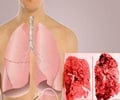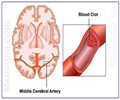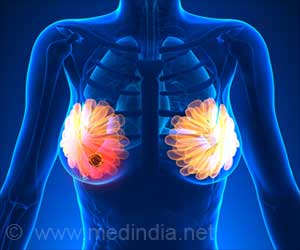According to a study in the September Journal of Nuclear Medicine , young women at risk of a pulmonary embolism should first undergo a ventilation/perfusion lung scan rather than a CT angiogram.
According to a study in the September Journal of Nuclear Medicine , young women at risk of a pulmonary embolism should first undergo a ventilation/perfusion lung scan rather than a CT angiogram.
“A V/Q scan can be the first choice—but the CT angiogram is the classic choice—for diagnosing a pulmonary embolism,” noted H. Dirk Sostman, a professor of radiology and executive vice dean at Weill Cornell Medical College in New York City and chief academic officer at the Methodist Hospital in Houston, Texas. “A ‘very low probability’ V/Q lung scan—together with a ‘low probability’ objective clinical assessment—is as reliable as a CT angiogram and allows a doctor to evaluate whether a pulmonary embolism is present or not,” added Alexander Gottschalk, a professor of diagnostic radiology at Michigan State University in East Lansing.A noninvasive V/Q scan involves two tests using radioactive material to measure breathing (ventilation) and circulation (perfusion) in all areas of the lungs, said Gottschalk, who has performed research with studies like the Prospective Investigation of Pulmonary Embolism Diagnosis (PIOPED) project for more than 30 years. V/Q scans reduce the radiation to the breast by about 70 times on average compared to higher-radiation procedures such as computed tomography pulmonary angiography (CTA), he explained.
“While CTA is the major test used widely to detect pulmonary embolisms, it is associated with higher radiation risk, especially for young women of reproductive age,” said Gottschalk. “The combination of a low probability V/Q scan and low probability clinical assessment is extremely effective,” said Sostman. “Our study is important for doctors—and their patients—since tests show that high radiation doses to the breast from CT, especially important in young women, may increase their risk of breast cancer,” he added.
A pulmonary embolism is a sudden blockage in a lung artery, usually occurring when a blood clot travels to the lung from a vein in the leg. This condition can cause permanent damage to a part of the lung. And, if a blood clot is large—or if they are numerous—a pulmonary embolism can cause death. According to statistics, at least 100,000 cases of pulmonary embolism take place each year in this country, and it is considered the third most common cause of death in hospitalized patients. A person’s risk at getting a pulmonary embolism doubles every 10 years after the age of 60.
In their study, Gottschalk and Sostman analyzed the prospectively gathered data from PIOPED II, a large-scale, multicenter trial. “Very Low Probability Interpretation of Ventilation Perfusion Lung Scans in Combination With Low Probability Objective Clinical Assessment Reliably Excludes Pulmonary Embolism: Data From PIOPED II” appears in the September issue of the Journal of Nuclear Medicine, which is published by SNM, the world’s largest molecular imaging and nuclear medicine society.
Source-Eurekalert
SRM /J
 MEDINDIA
MEDINDIA
 Email
Email










